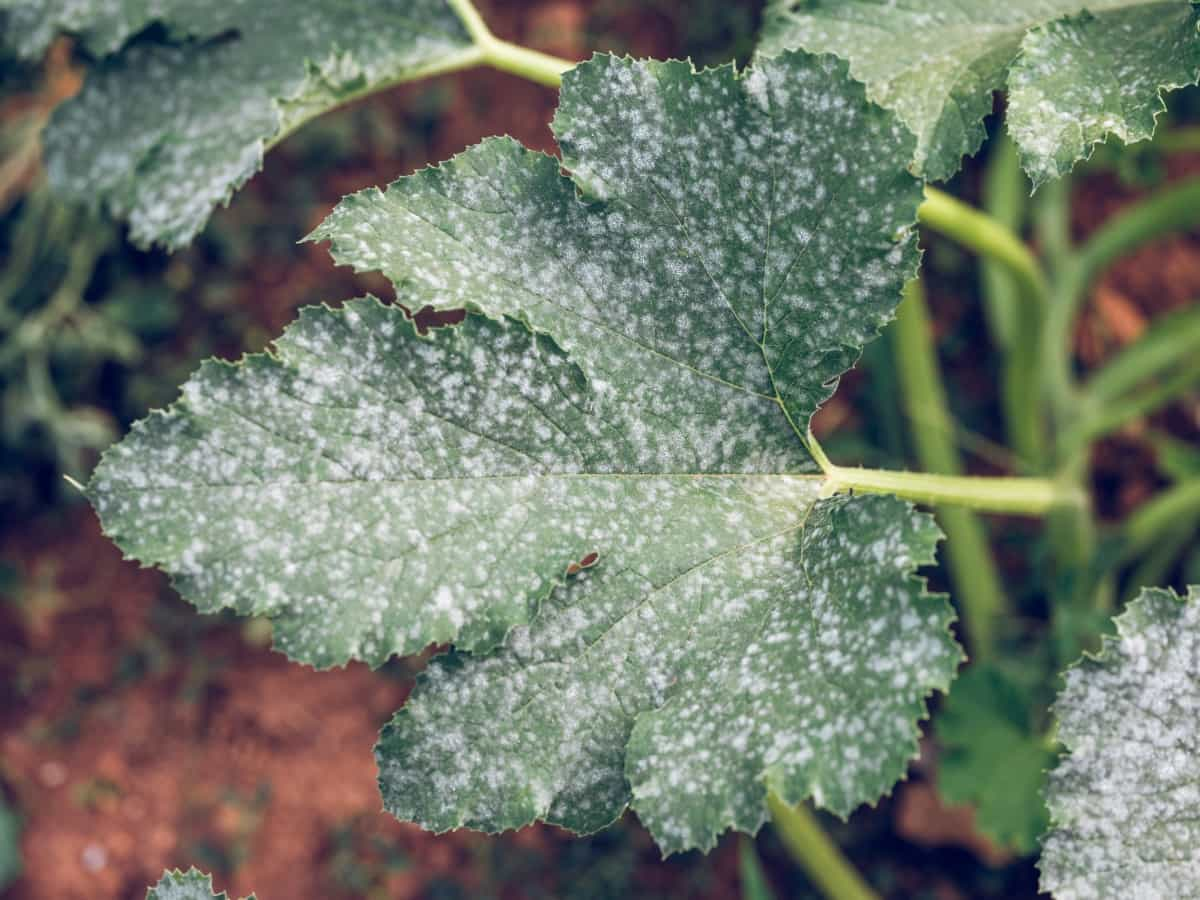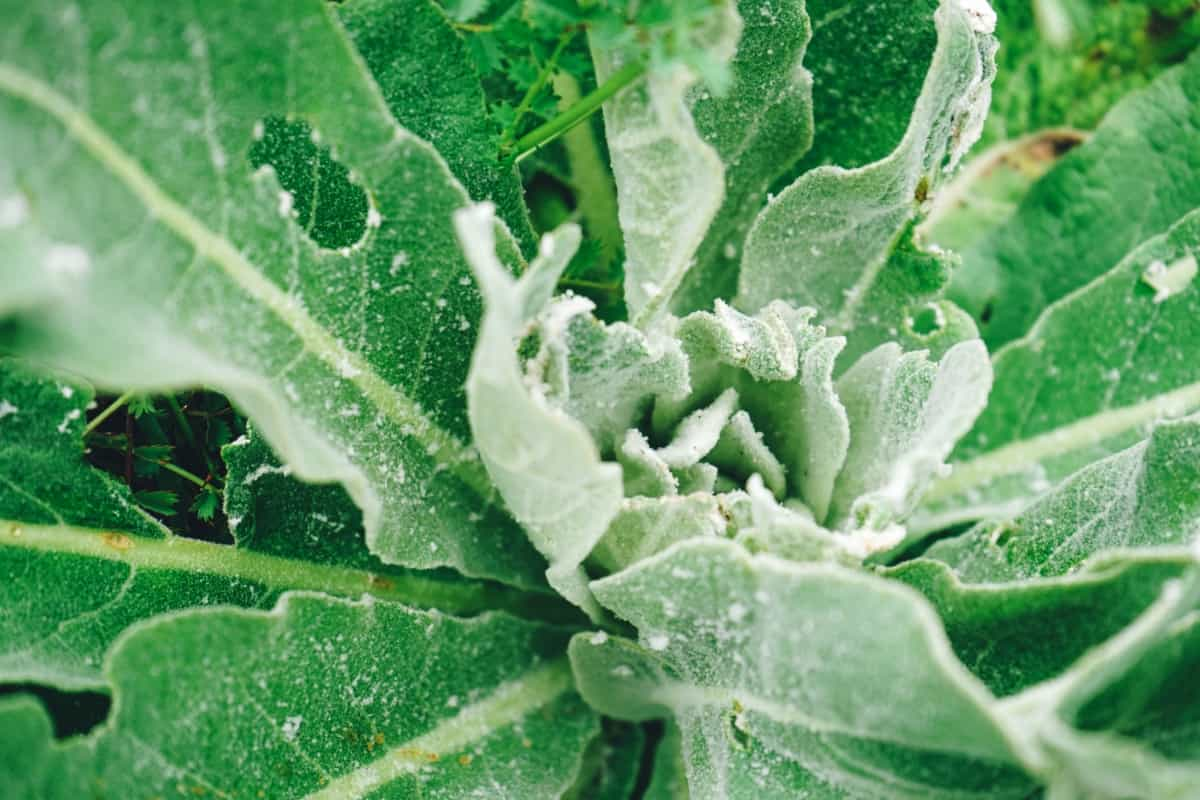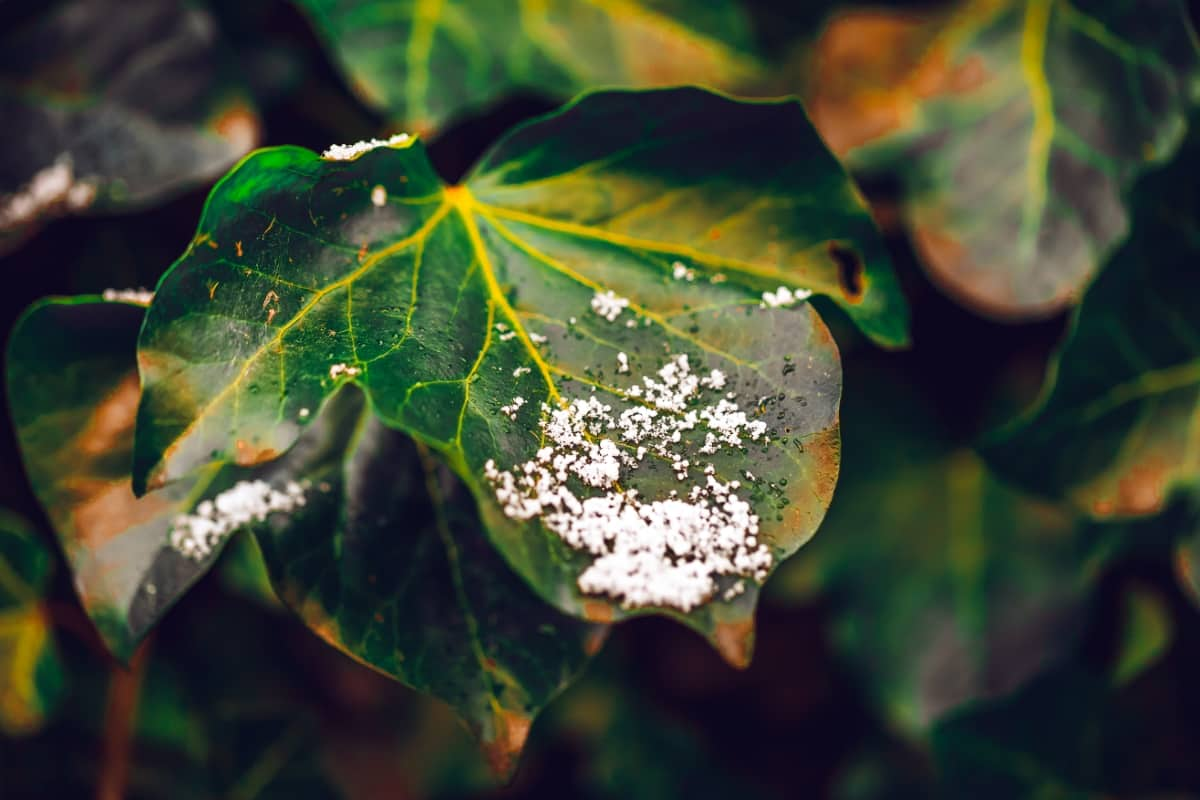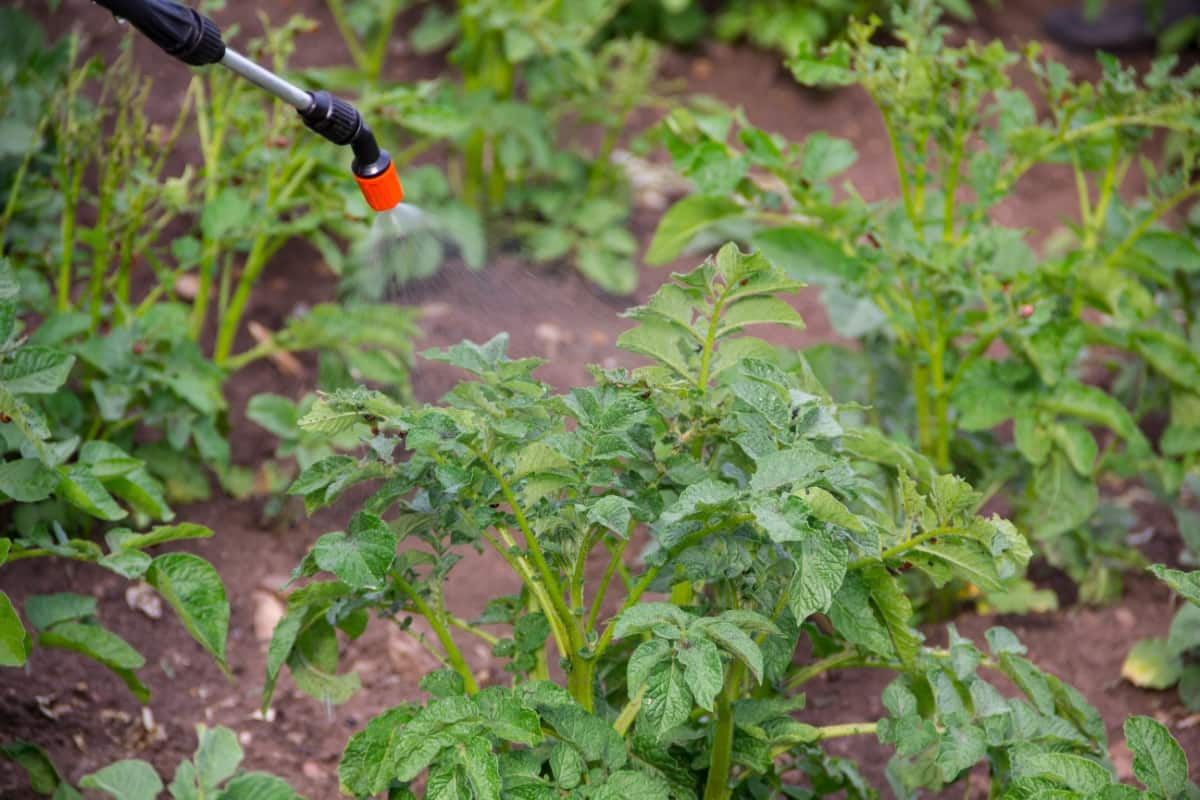Powdery mildew is a common disease that affects a variety of plants, including ornamentals and vegetables. It thrives in warm, dry conditions, spreading through airborne spores. To prevent powdery mildew, consider planting in sunny areas to promote better air circulation and avoid overwatering, as the fungus can thrive in damp conditions.

How to Prevent Powdery Mildew
Causes of Powdery Mildew
A plant disease known as powdery mildew can be found all over the world and causes a powdery growth to appear on the surface of leaves, buds, young stems, fruits, and flowers. Many different types of specialized fungi from the genera Erysiphe, Phyllactinia, Podosphaera, Microsphaera, Sphaerotheca, and Uncinula cause powdery mildew. Powdery mildew can harm hundreds of species of field crops, weeds, flowers, vegetables, fruits, shrubs, and vines.
How to Identify Powdery Mildew: Early Signs and Symptoms
Due to the vast number of microscopic spores (conidia) carried in chains, the appearance is white and powdery. It is unusual for these wind-borne spores that they do not require free water to germinate and spread. Conidia can regenerate every three to fourteen days. The mildewed plant portions may be twisted and stunted if the illness is severe.
Common symptoms include deformed or fewer blooms, yellowing and withering leaves, and decreased fruit quantity and quality. When nights are cool and days are warm, mildew thrives in crowded, shaded, inadequately aerated areas. Round black specks, called cleistothecia, are sexual fruiting structures that appear in the mildew at maturity or in the autumn.
Effective Prevention Techniques for Powdery Mildew in Gardens
- Plant Resistant Varieties: plant varieties that are resistant to powdery mildew. Many plant breeders develop varieties with natural resistance to common diseases, including powdery mildew.
- Proper Spacing: Spacing between plants to ensure good air circulation. Proper Spacing reduces humidity around the plants, making it less favorable for powdery mildew development.
- Morning Watering: water your plants in the morning to allow the foliage to dry quickly. Moist foliage, especially in the evening, creates a conducive environment for powdery mildew. Drip irrigation or soaker hoses can be used in keeping foliage dry.
- Remove Infected Plant Material: Promptly remove all infected leaves or plants so prevent the spread of powdery mildew. Dispose infected plant material in the trash, not the compost, to avoid spreading the spores.
- Mulching: Apply a layer of mulch around plants to help maintain consistent soil moisture and prevent splashing of soil onto the foliage. This can reduce the chances of powdery mildew infection.
- Fungicide Treatments using fungicides as a preventive measure. Fungicides containing neem oil, sulfur, potassium bicarbonate, or horticultural oils, like Myclobutanil, propiconazole, and thiophanate-methyl, can be effective.
- Pruning: Prune plants to improve air circulation and reduce the density of the foliage. This helps in lowering humidity around the plants and inhibits powdery mildew development.
In case you missed it: How to Prevent Downy Mildew: Causes, Identification, Symptoms, and Treatment

Organic Methods for Preventing Powdery Mildew on Plants
- Copper-based fungicides, such as copper sulfate or copper octanoate, can be used as organic preventatives. These products disrupt fungal cell membranes and inhibit spore germination.
- Encourage natural predators and beneficial insects in your garden, such as ladybugs and predatory mites, which feed on powdery mildew and other pests.
- Water plants at the base to keep the foliage dry. Watering in the morning time for the leaves to dry during the day, reducing the chances of powdery mildew development.
- Maintain good garden hygiene by removing and disposing of infected plant material promptly. Proper Spacing, pruning, and providing adequate air circulation can also prevent the spread of powdery mildew.
- Neem oil is a natural fungicide with antifungal properties. It can be effective in preventing powdery mildew.
Integrated Pest Management (IPM) Approaches to Preventing Powdery Mildew
Powdery mildew can be controlled through various cultural practices, including crop rotation, proper plant spacing, and the use of resistant varieties. Crop rotation disrupts the life cycle of powdery mildew, while proper plant spacing promotes air circulation. Plants with resistant cultivars are less susceptible to powdery mildew. Regular inspections for early signs of powdery mildew, such as white powdery spots on leaves, are crucial.
Infected plant parts are pruned to reduce infection severity and improve air circulation. Proper watering at the base helps keep foliage dry, while overhead irrigation is avoided to prevent prolonged leaf wetness. Proper nutrient management is essential for plant health and resistance to powdery mildew, but excessive use can promote succulent growth, making it more susceptible to fungal infections.
Environmental Factors Contributing to Powdery Mildew Outbreaks: Prevention Tips
To prevent powdery mildew, ensure proper air circulation, avoid overcrowding, and prune plants to increase ventilation. Use fans in enclosed spaces to reduce humidity. Choose plant varieties that are less susceptible to powdery mildew and use proper Spacing and shading. Water plants at the base and foliage dry, using drip irrigation, soaker hoses avoid overhead irrigation.
Reduce foliage density to improve air circulation and prevent powdery mildew development. Proper soil drainage is crucial to prevent waterlogging and improve drainage with organic matter. Maintain balanced soil nutrition and avoid over-fertilization with nitrogen. Focus on maintaining plant health earlier in the season and avoid late-season growth.
Cultural Practices for Preventing Powdery Mildew in Agricultural Settings
- Rotate crops to disrupt the life cycle of powdery mildew. Avoid planting the same susceptible crops in the same location year after year.
- Regularly prune and thin plants to remove excessive foliage. This opens up the canopy, allowing better air movement and reducing the humidity that favors powdery mildew.
- Plant crops early in the season to take advantage of favorable weather conditions. Early planting can help crops establish before the onset of conditions conducive to powdery mildew.
- Plant varieties that are resistant or less susceptible to powdery mildew. Consult with agricultural extension services or seed suppliers for information on resistant cultivars.
- Moderate nitrogen fertilization to avoid excessive succulent growth, more susceptible to powdery mildew.
- Maintain well-drained soil to prevent waterlogging, as excessive moisture promotes powdery mildew. Amend soil with organic matter to improve soil structure and drainage.
In case you missed it: How to Manage Downey Mildew in Home Garden: Symptoms, Causes, Cultural, Biological, Chemical, Natural, and Organic Control

Choosing Resistant Plant Varieties to Prevent Powdery Mildew Infections
To prevent powdery mildew infections, choose plant varieties with genetic resistance. Resistant cultivars are available for various plants, such as roses, crape myrtle, euonymus, sycamore, cantaloupe, Cole crops, cucumber, melons, and peas. Additionally, ornamental shrubs offer resistant varieties suitable for new plantings or replacements. Optimize prevention by planting resistant cultivars in sunny locations, pruning for air circulation, and selecting disease-resistant options whenever possible.
Preventive Measures for Powdery Mildew in Greenhouse Environments
In greenhouse environments, preventing powdery mildew is essential for maintaining optimal plant health. Implementing preventive measures can mitigate the risk of infestations. Firstly, ensure proper ventilation to reduce humidity levels, as powdery mildew thrives in damp conditions. Regularly clean and sanitize greenhouse surfaces to eliminate potential sources of spores.
Employing resistant plant varieties can provide a natural defense against powdery mildew. Additionally, strategic Spacing of plants promotes adequate air circulation, hindering the development of the fungus. Integrated pest management practices, including the introduction of beneficial insects like ladybugs, contribute to biological control.
In case you missed it: Rose Powdery Mildew Disease Management: Symptoms, Treatment, Chemical, Biological, and Organic Control

Monitoring environmental conditions and promptly addressing any signs of powdery mildew, such as white, powdery spots on leaves, enables early intervention. By combining these preventive measures, greenhouse operators can create an inhospitable environment for powdery mildew, safeguarding their crops and ensuring a thriving cultivation space.
Conclusion
To prevent powdery mildew, it’s crucial to understand its causes and symptoms. Effective strategies include maintaining proper air circulation, ensuring adequate sunlight, and employing resistant plant varieties. Timely identification and treatment, using fungicides or natural remedies, are key to managing this common fungal disease and protecting plant health.
- Deworming Schedule for Dogs/Puppies: A Beginners Guide
- How to Prevent and Control Parasites in Goats
- Beneficial Insects in Pest Management
- Natural Solutions for Pest Control in Flower Gardens
- Types of Fungicides Used in Agriculture
- Common Issues in the Fruit Development Stage of Pomegranate Farming
- Fruit Development Issues in Papaya: Easy Solutions and Treatment
- Soil-Borne Diseases and How to Protect Your Plants
- Practices to Prevent Disease Spread in the Garden